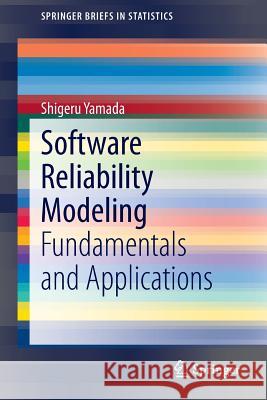Software Reliability Modeling: Fundamentals and Applications » książka
Software Reliability Modeling: Fundamentals and Applications
ISBN-13: 9784431545644 / Angielski / Miękka / 2013 / 90 str.
Software reliability is one of the most important characteristics of software product quality. Its measurement and management technologies during the software product life cycle are essential to produce and maintain quality/reliable software systems. Part 1 of this book introduces several aspects of software reliability modeling and its applications. Hazard rate and nonhomogeneous Poisson process (NHPP) models are investigated particularly for quantitative software reliability assessment. Further, imperfect debugging and software availability models are discussed with reference to incorporating practical factors of dynamic software behavior. Three software management problems are presented as application technologies of software reliability models: the optimal software release problem, the statistical testing-progress control, and the optimal testing-effort allocation problem.Part 2 of the book describes several recent developments in software reliability modeling and their applications as quantitative techniques for software quality/reliability measurement and assessment. The discussion includes a quality engineering analysis of human factors affecting software reliability during the design review phase, which is the upper stream of software development, as well as software reliability growth models based on stochastic differential equations and discrete calculus during the testing phase, which is the lower stream. The final part of the book provides an illustration of quality-oriented software management analysis by applying the multivariate analysis method and the existing software reliability growth models to actual process monitoring data.











